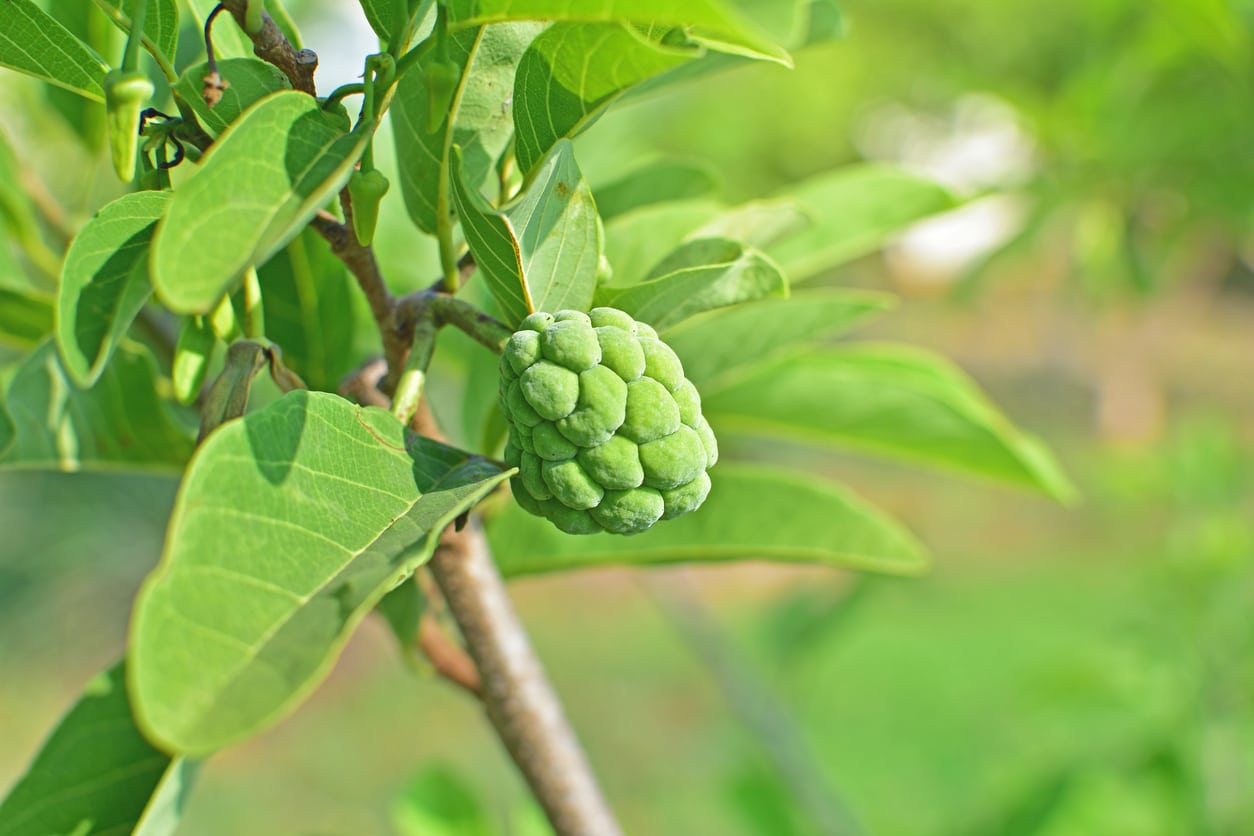[ad_1]
Cherimoya trees are subtropical to moderate pleasant trees that will certainly endure extremely light frosts. Potentially belonging to the Andes hill valleys of Ecuador, Colombia and also Peru, Cherimoya is very closely pertaining to the sugar apple and also is, as a matter of fact, additionally called the custard apple. Keep reading to learn more about expanding cherimoya fruit, cherimoya plant treatment and also various other fascinating cherimoya tree details.
What is a Cherimoya?
Cherimoya trees (Annona cherimola) are swiftly expanding evergreens that are deciduous when expanded in the cooler California environment from February to April. They can obtain elevation of over 30 feet (9 m.), however can additionally be trimmed to limit their development. Young trees expand with each other to develop an all-natural espalier that can be educated versus a wall surface or fencing.
Although the tree proliferates at once in springtime, the origin system often tends to remain instead stunted and also weak regardless of the elevation of the tree. This indicates that young trees require to be bet for the initial couple of years of their life.
Cherimoya Tree Info
Foliage is dark eco-friendly on the creamy and also leading eco-friendly on the bottom with apparent veining. The fragrant blooms are birthed one by one or in teams of 2-3 on brief, haired stalks along old timber however at the exact same time as brand-new development. The short-term blossoms (lasting just 2 days) are consisted of 3 fleshy, green-brown external flowers and also 3 tiny, pink internal flowers. They open up initially as women blossoms and also later on as male.
The resulting cherimoya fruit is a little bit heart-shaped and also 4-8 inches (10-20centimeters.) in size and also evaluating approximately 5 extra pounds (2 kg.). The skin differs according to the cultivar from smooth to covered with rounded bumps. The internal flesh is white, somewhat acidic and also fragrant. Custard apple fruit ripens from October to May.
Cherimoya Plant Care
Cherimoyas require sunlight incorporated with awesome aquatic nighttime air. They succeed in a range of dirt kinds however prosper in well-draining, moderate quality dirt with modest fertility and also a pH of 6.5-7.6.
When the tree goes inactive,
Water the tree deeply biweekly throughout the expanding period and also after that quit sprinkling. Feed cherimoyas with a well balanced plant food like 8-8-8 in midwinter and afterwards once again every 3 months. Boost this quantity annually till the tree starts to birth.
Cherimoya fruit container be instead hefty, so trimming to create solid branches is very important. Train the tree to 2 scaffold branches throughout its inactive duration. The following year, get rid of two-thirds of the previous year’s development and also leave 6-7 great buds. Weaken any type of going across branches.
Young trees need to be safeguarded from frost by covering the trunk with sponge foam or such, or covering the whole tree. In cooler areas, plant the tree following to a southern-facing wall surface or under the eaves where it can obtain accessibility to caught warmth.
Lastly, all-natural pollinators might be a trouble. It is best to hand cross-pollinate in mid-season throughout 2-3 months. Hand cross-pollinate in the very early night by collecting the white plant pollen from the anthers of a totally open male blossom and also instantly move it to a responsive woman utilizing a tiny, soft brush.
Hand cross-pollinate every 2-3 days on blossoms that are simply inside the tree to prevent wind- or sun-burned fruit. Be prepared to slim the fruit if the tree establishes greatly. A too much of fruit will certainly cause tiny custard apples and also smaller sized returns in the future.
[ad_2]

